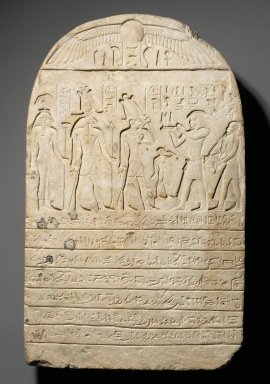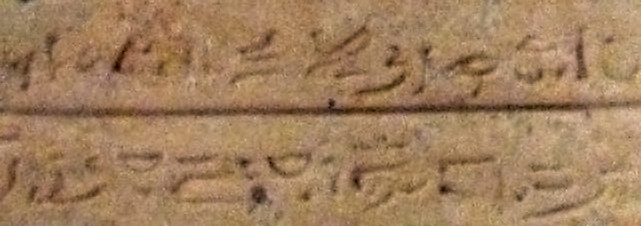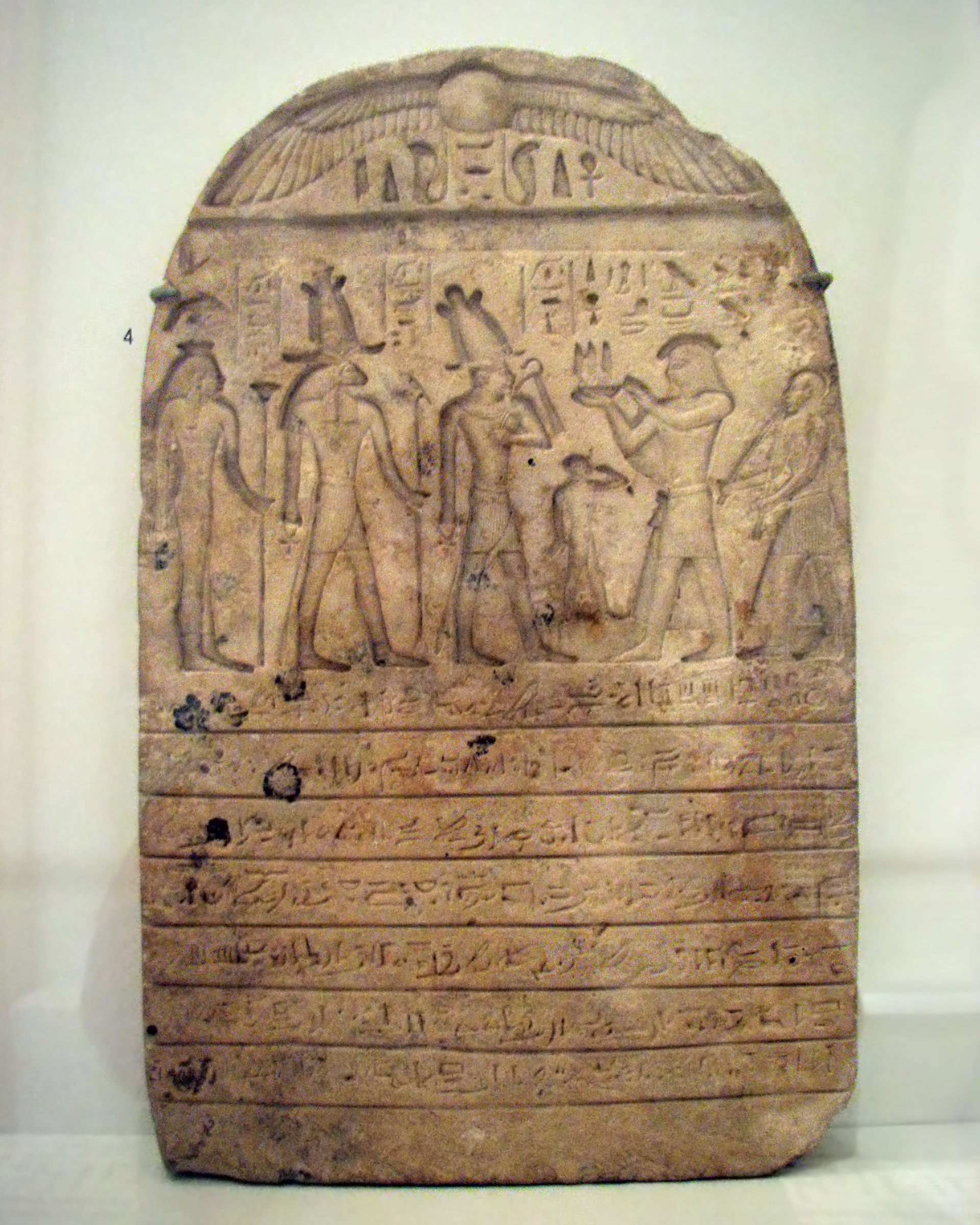|
That dark shape is my shadow, a look at the museum photo reveals only the small black blotches as imperfections:

Photo © Brooklyn Museum
I do, however, have a larger photo for study. The writing looks different than what we usually see, it's hieratic, which is cursive and after the 12th Dynasty always read from right to left. It's unusual to use it in a stone stela, as hieratic was mostly for "papyrus, wood, or stone and pottery ostraca."(Wiki)

We can surmise the reason for its use, however.
(From the info card):
"This stela, which once stood in or near a temple, commemorates a donation of land to that temple, and its text promises dire punishments to anyone misappropriating the land. In modern times the media have made much of Egyptian curses, especially that of King Tutankhamun's tomb. That curse was in fact an invention of a newspaper reporter, inspired by the sudden death of Lord Carnarvon, the sponsor of the archaeological expedition, several months after he attended the opening of the tomb in 1922. Nevertheless, the ancient Egyptians did aim curses against tomb and temple violators, and they believed it was magic (heqa) in the form of written and spoken words that made those curses possible and effective."
Wiki states of hieratic that "It was also the writing system first taught to students, knowledge of hieroglyphs being limited to a small minority who were given additional training", citing Baines, John R. (1983). "Literacy and Ancient Egyptian Society". They wanted the maximum number of people to be able to read the curse.
|





